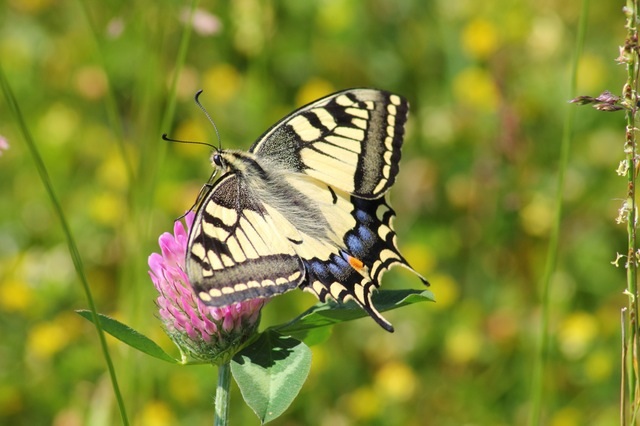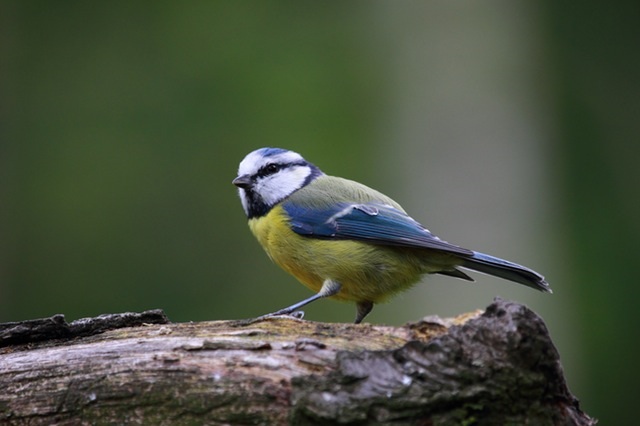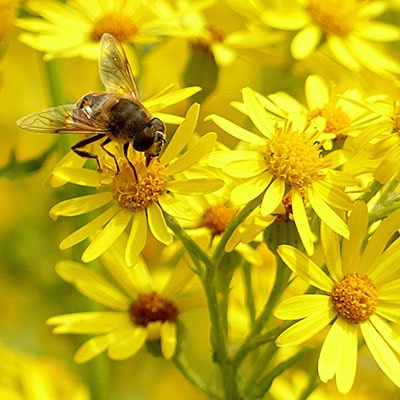
Following on from our showcase of outdoor learning projects and funds throughout the UK, we recently spoke with the guys over at Buglife about outdoor learning and how attitudes towards it have changed over recent years.
We looked at the different aspects of outdoor learning, including the environment, wildlife and conservation, to get more of an idea about the work being carried out. Check out our interview below.
Our Interview with Buglife
1. How do you think attitudes towards outdoor learning have changed over recent years?
After a long period of risk-averse avoidance of outdoor learning, there is, at last, a movement towards recognising the value and benefits of outdoor classrooms though, unfortunately, the long period of deficit has led to a considerable skills and a confidence gap, which requires materials and support from other organisations.
2. Do you think that more people are becoming involved in projects and funds that are helping the environment?
Recent statistics indicate that the number of people volunteering to assist with environmental and conservation-benefiting activities is on the decrease; the paucity of time is the most cited reason for this.
The funding opportunities to make a difference are also thinning; we have seen the closure of a number of key sector funders and the contraction of others, for instance landfill tax, where a third of monies have now been taken into the treasury rather than being distributed in the sector.
3. Just how important is it that people care for the all the different wildlife species that come into their gardens? Is there more that people could do in their gardens to ensure safe areas for wildlife?
It is vitally important that people do what they can in their gardens to support wildlife as, with much of the countryside becoming effectively mono-culture wasteland, our gardens can become a last refuge for many animals and plants alike. Even if you only have a balcony, you can make a difference for wildlife.
The first step is to ensure an abundance of year-round flowers, think bulbs for spring and where possible go for simple rather than double type flowers, which are easier for pollinators to access.
Think about adding a bee home to a south facing wall, great for solitary bees which do not sting. A pond is great for wildlife, although can present issues with children, but even a bird bath can make the difference for invertebrates and thirsty hedgehogs. Create a log pile for beetles. A compost heap is home to many invertebrates and, if you are lucky, even grass snakes. Allow part of your lawn to become a meadow. Leave piles of leaves out over winter, ideal for hibernating bugs and mammals, and generally be a bit untidy in your gardening.
Most importantly, avoid using pesticides and herbicides in your garden. They are not necessary and do more harm than good as they affect not just the problem but also many organisms that help keep the garden in balance. Consider making a hedgehog walkway under your fences to ensure they have a large enough habitat; a small piece of half-pipe will suffice.

4. How can people do more to encourage bugs or invertebrates into their gardens? What benefits do these animals bring with them?
Pollinators in the garden are essential to grow fruit, peas or beans, which will not set without pollination (this includes soft fruits such as strawberries). Many Beetles devour slugs and other pests. Solitary wasps do not sting and pick off unwanted caterpillars and other grubs. Ladybirds and lacewings are voracious consumers of aphids. The Leopard slug eats other slugs. Centipedes eat slugs.
Earthworms, some slugs, woodlice, beetle larvae and many others help break down dead and rotting vegetation, returning it as nutrients to the soil.
5. You are the only organisation in Europe devoted to the conservation of all invertebrates. How many different locations do you operate in?
Buglife operates across the whole of the UK and the island of St Helena, in terms of delivering on the ground conservation, whilst making representation to the EU and United Nations bodies on the overall policy situation as it relates to bugs.
We have offices in Stirling, Cardiff, Peterborough and Plymouth, with other staff working from home.
6. What sort of projects does your organisation run?
A lot of our current work focuses on the priority of pollinators: 'Buzzing' projects in urban areas, where we are creating pollinator-friendly habitats in parks and other green spaces, and the 'B-Lines' initiative, where we are urging the country to create interconnected pollinator pathways.
We also do a lot of work supporting individual species at risk of extinction, such as the tansy beetle in York, the horrid ground-weaver spider in Plymouth, and the ladybird spider in Dorset.
We manage Canvey Wick Nature Reserve, a brownfield site in Essex, and have a lot of expertise in brownfield management.
In Scotland, we are working to restore peat bogs at Slamanan, and raising awareness about the narrow-headed wood ant.
7. You also run campaigns such as 'Get Britain Buzzing'. What has been your most successful campaign?
Buglife has had many successful campaigns, including obtaining bans on two harmful chemicals, cypremethrin and neonicotinoids; and saving several sites from development, most recently Radford quarry in Plymouth, which is one of only two places on the planet where the horrid ground-weaver spider can be found.
Get Britain Buzzing has also been successful in influencing the first ever national pollinator strategy, which has taken on a lot of our 'asks'.

8. What would you say are the key aims of your projects? Do you have any future plans to help achieve them?
A wildlife-rich planet, where species, including invertebrates, thrive alongside people.
Buglife’s aim is to stop the extinction of invertebrate species and to achieve sustainable populations of invertebrates.
We will accomplish our aim by protecting, improving and expanding their habitats and strengthening the respect given to bug species. We will achieve this by:-
- Mobilising, inspiring, enabling and persuading others to take action, through the development and dissemination of knowledge and values.
- Undertaking practical conservation projects.
- Promoting the value of invertebrates and raising awareness about the challenges to their survival.
- Shaping the development of relevant legislation and policy.
- Saving the small things that run the planet.
9. Conservation has been important for many years now, in helping ensure species’ existence. Do you think the importance of conservation has increased dramatically over recent years?
The need for conservation, and for it to be taken seriously, has grown immensely in recent years, as growing population and consumption has placed ever increasing strains on the natural world, as well as causing greater isolation of wildlife in disconnected oases.
Climate change is also increasing the need for conservation, as weather extremes and change increasingly threatens species' survival, for example warm, wet winters are bad for UK bee species, and migration north is impeded by industrial farming and other barriers to traversing the landscape.
10. What is the most beneficial thing about outdoor learning?
Outdoor learning provides the ideal opportunity to reconnect people with nature, to ensure we appreciate the fast-vanishing buzz of life that for so long has been taken for granted or even vilified as frightening and dangerous.
We'd like to thank Buglife for a fascinating insight into their work and for explaining the importance of invertebrates. If you'd like to turn your garden space into a welcoming home for wildlife, start by selecting the perfect gardening tools.




